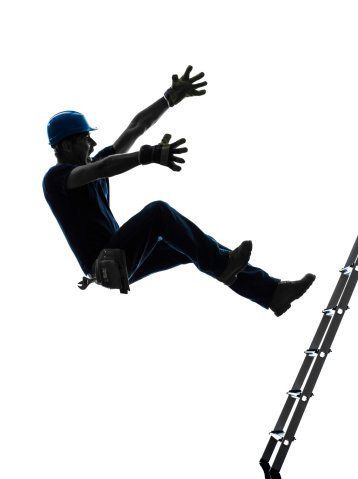
They will be visiting construction sites across NSW to ensure compliance and raise awareness about the risks when working at heights.
This blitz is geared towards saving lives and has been prompted by a tripling of falls incidents reported to us over the last five years, with the majority occurring in the construction industry. So far this year, eight workers have been killed – and many more suffered catastrophic injuries.
Myles Lowry knows all too well the terrible consequences when workplace safety goes awry. He was severely injured when he fell four metres onto a concrete slab on a mid-north coast construction site.
An additional and alarming statistic reported by SafeWork Australia is that nearly half of all fatalities in construction last year occurred between October and the end-of-year. SafeWork NSW aim to make sure all tradies are safe and sound this Christmas.
The blitz coincides with the introduction of tough new laws, where employers can be fined up to $3600 for failing to control the risk of falls adequately.
Fall prevention deserves your attention.
The Protection of the Environment Operations (Waste) Regulation 2014 introduced new requirements for waste transporters to record the movement of more than 100 kilograms of asbestos waste or more than 10 square metres of asbestos sheeting.
What problem led to the change?
Exposure to
airborne asbestos fibres, even in small quantities, can lead to significant
health risks. Whilst environmental risks caused by asbestos are minimal,
potential life-threatening illnesses caused by asbestos fibre exposure include
asbestosis, lung cancer and mesothelioma.
Illegal dumping
of asbestos may lead to increased exposure of individuals to asbestos fibres
and thus increase the risk of asbestos-related illnesses. The risk of exposure
increases when asbestos is dumped close to communities or sites that people
frequently visit.
The changes
will increase the EPA’s oversight of the removal, transport and disposal of
asbestos waste. They will also strengthen the EPA’s enforcement capabilities
and protect human health, which is consistent with the objectives of the
Protection of the Environment Operations Act 1997.
How
will this effect asbestos waste transporters and asbestos disposal facilities?
The waste regulation requires transporters of asbestos to record information about the movement of asbestos waste loads from the site of generation to the final disposal point. To make this easy, the EPA has developed an online system called WasteLocate to ensure asbestos waste is disposed of lawfully in NSW and to assist transporters of these materials to fulfil their legal obligations.
WasteLocate uses QR codes, accessible through mobile devices, to monitor the movement of asbestos and tyres from place of generation to a lawful disposal facility.
The WasteLocate page has more information on this new tool and the asbestos flyer explains how it affects the asbestos industry.
Did you know that asbestos is a naturally occurring substance? It might surprise you to learn that it can actually be found in rock, sediment and soil throughout regional NSW.
While the chances of coming into contact naturally occurring asbestos (NOA) are slim, workers and residents in affected areas should still know what to look for and how to manage it.
So what do you need to do?
NOA is found in a variety of colours, shapes and sizes, and can be difficult to spot. The SafeWork website includes a handy map to let you know whether you’re in a low, medium or high risk region.
If you’re conducting work in an affected area, take the following precautions:
- Limit
dust-generating work and avoid handling rocks and soil that could contain NOA.
- Consider the
weather. Try not to do work that disturbs the ground on windy days, or if
conditions are dry and dusty.
- Wet down areas
if necessary, particularly when planting, seeding and digging.
- If you think
you've found NOA, cover with clean soil, rock or other material where
practical.
- If you control
a workplace that is affected, you should have an asbestos management plan in
place. This should include providing PPE to any workers who might be disturbing
the ground and training your workers.
- Consider calling
in a licensed asbestos assessor or an occupational hygienist to test the site
for NOA.
